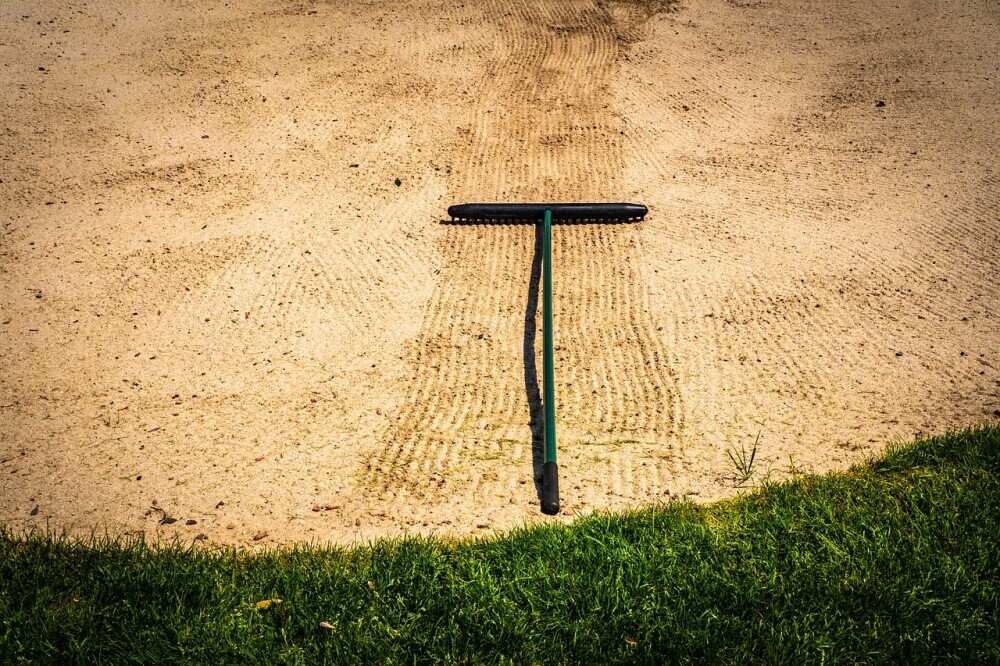Escaping Trouble: How To Hit Shots From The Rough, Sand, And Tight Lies


Fore! Quick note: a few links here are affiliate links. If you snag gear through them, I earn a small commission — no extra strokes added to your game.
Golf isn’t just a game of smooth fairways and perfect lies, right? Sometimes you find yourself knee-high in the rough, staring down a sandy bunker, or dealing with a tight spot on rocky terrain. It’s about turning those tricky situations into opportunities to flex your skills and save some strokes. Get your pencils out, because the golf viking is here to give you some tips on how to get out of even the stickiest situations on the golf course.
Mastering the art of the escape isn’t just for pros. Anyone can benefit. You see, every shot counts. Managing those tough lies can transform your game. It’s not just about brute force; it’s about strategy, precision, and a little bit of finesse. And knowing how to get yourself out of a bad spot can save you from an embarrassing scorecard.
When you’re stuck in a rough spot, it’s a chance to sharpen your focus. Getting out can give you a confidence boost that echoes through the rest of your game. Instead of letting frustration take the wheel, understanding how to tackle these obstacles can open doors to improving your scores.
So, when the course throws you a curveball, you don’t panic. Instead, you channel your inner golf guru, strategize your shot, and make your way back to safety, one thoughtful, well-executed play at a time. Love it or hate it, these moments present learning opportunities that can truly elevate your game. So how do we get our ball safely out of the rough? Well, I’ll tell you.
Mastering tricky lies starts with solid fundamentals. Check out Mastering the Golf Swing for swing mechanics that help you get out of tough situations consistently.

The Rough Reality: Mastering Shots from the Rough
Ever find yourself staring at a ball buried deep in the rough, thinking there’s no way out? It’s all about staying calm and knowing your options. The first step is picking the right club for the job. Usually, an iron with more loft, like a 7-iron or 8-iron, can help lift the ball out. You want a club that’s going to lift your ball out of the tall grass.
Set up your stance with most of your weight on the front foot and choke down on the club a touch for better control. A narrow stance can help you keep balance, and don’t forget to keep your eyes on the ball, always. When you swing, try to cut through the grass and keep your follow-through strong. That powerful move can make a big difference in getting the ball out safely.
It’s more than just swinging hard; it’s about the technique. Try to swing through the grass like you’re cutting it. This ‘sweeping’ action will help get the ball airborne while minimizing resistance. Give yourself a few practice swings to get this sweeping motion through the grass down pat.
To boost your rough game, practicing on different terrains can simulate real-game situations. Combining these physical skills with a clear mental strategy will make you more prepared when you face the rough next time on the course. Through experience you will learn how to handle every lie you find yourself.
So next time you’re in the thick of it, remember: choosing the right club, using proper form, and keeping a clear head can get you out unscathed. Besides, isn’t it great to know you’re turning those struggles into skills? So now that we know how to get out of the rough, what about the sand?
Course management can reduce the need for difficult recovery shots. Our How to Break 90 in Golf guide shows strategies to play smart and avoid unnecessary hazards.

Escaping the Sand Trap: Techniques for Sand Bunker Shots
Stuck in the dreaded sand trap, huh? No worries. It’s all about technique and the right strategy. First thing you need is a sand wedge, your best friend when you’re dealing with bunkers. The design of this club helps glide through the sand, lifting the ball out with a satisfying pop.
Let’s talk about stance. Set your feet wider apart, and open them slightly. This helps stabilize you during the swing. Open the clubface too—this boosts loft. Aim to hit the sand a couple of inches behind the ball. You’re aiming for a smooth, sweeping shot, not a powerful hit. Trust the sand wedge to do its job. It’s designed to help you pop the ball out of the bunker.
The magic lies in what’s called the ‘splash’ shot. You’re literally splashing the sand out of the bunker, and the ball comes along for the ride. Keep your swing steady and follow through. Imagine a smooth curve, like you’re sweeping the sand into the air.
Practicing these elements can take some time but remember, consistency is key. Practicing in a bunker with varying depths and sand textures can help make this shot second nature. The more you practice, the more you’ll start feeling the rhythm and getting those balls out effortlessly.
And when you nail that bunker shot, there’s nothing quite like it. You’ll step out of that sand like a pro, maybe just a little less clean and a whole lot more confident. So what about other trouble your find yourself in on the course?
Selecting the right club makes all the difference in tough lies. Learn more in Best Golf Clubs for Backspin to choose wedges and irons that perform reliably in rough or sand.

Tight Situations: Handling Other Tough Lies
When dealing with unexpected terrain like rocks or hard ground, it’s all about flexibility in your game plan. Depending on the situation, an iron or even a hybrid can be your go-to club. Hybrids are particularly useful as they can help lift the ball with ease when you’re facing a tough lie.
Let’s tackle rocky soil or hard ground first. With these lies, it’s essential to focus on a cleaner strike since you don’t want to dig into the ground. Keeping a steady stance and striking the ball first will help you maintain control. Position the ball back in your stance just a bit to encourage a downward strike, but make it deliberate and purposeful.
Now, uphill or downhill lies can really test your skills. Adjust your stance to the slope: lean into the slope for an uphill lie and adjust your shoulders to the angle of the hill for downhill shots. Maintaining balance is the trickiest part, so keep your weight centered and swing with more torso rotation to keep things smooth.
In these challenging spots, staying composed and trusting your instincts can make all the difference. It may seem daunting, but remember that each lie requires a tailored approach, a blend of the right club, the perfect setup, and controlled mechanics can turn any tough spot into just another part of the journey. Every situation is different but be aware of what you’ll need to do to get your ball into the best position for your next shot.
Get comfortable with these shots by practicing on varied surfaces and inclines. Each practice session adds to your skill bank and boosts the confidence needed to tackle the hills and hardscapes with flair. And hey, tough lies are the seasoning in the golf game—make sure they’re adding flavor instead of trouble. Let’s finish this up by talking about our mental game and how it can help save you from making your bad lie worse.

The Mental Game: Mastering Mindset in Tough Spots
Golf is as much a mental game as it is physical. When things get tricky, it’s your mindset that’ll keep you riding the wave instead of crashing down with frustration. Keeping calm, especially when you’re neck-deep in a tough lie, can turn these challenges into positive experiences.
Visualization is a powerful tool. Before you take that swing, picture the perfect escape. Imagine the ball soaring smoothly to the target. This mental rehearsing isn’t just about seeing success; it’s also about feeling the satisfaction of execution. Don’t forget to take a few practice swings to get the feel for the shot.
Staying relaxed under pressure involves some mental training—breathing exercises, for instance, can help slow your heart rate and get your focus back on track. It’s about creating a headspace where confidence thrives and doubt dwindles. Don’t let your emotions take over otherwise you may compound your mistakes and get yourself into even more trouble.
Next time you find yourself grappling with a problem shot, shifting focus to what you can control—the setup, the swing rhythm, the follow-through—helps you regain command of the situation. Recognizing that every shot presents an opportunity to improve is key to keeping a positive outlook.
Resilience builds over time. The more you’re able to shake off the bad shots and learn from them, the stronger your game becomes. It’s these mental skills that elevate your golf, making every round an opportunity for both growth and enjoyment. Well there you have it, now you have all the knowledge you need to get your ball safely onto the green. I’ll see you out on the golf course, staying away from the bunkers, of course.
Physical preparation improves control on difficult lies. Visit Golf Fitness for Power, Flexibility, and Consistency for exercises that enhance balance and strength for recovery shots.


